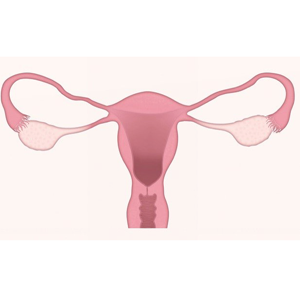Comparison of levator hiatal area and anteroposterior length between pelvic organ prolapse subject with and without bulging symptoms

Submitted: 22 October 2021
Accepted: 20 April 2022
Published: 3 May 2022
Accepted: 20 April 2022
Abstract Views: 803
PDF: 359
Publisher's note
All claims expressed in this article are solely those of the authors and do not necessarily represent those of their affiliated organizations, or those of the publisher, the editors and the reviewers. Any product that may be evaluated in this article or claim that may be made by its manufacturer is not guaranteed or endorsed by the publisher.
All claims expressed in this article are solely those of the authors and do not necessarily represent those of their affiliated organizations, or those of the publisher, the editors and the reviewers. Any product that may be evaluated in this article or claim that may be made by its manufacturer is not guaranteed or endorsed by the publisher.
Similar Articles
- Maxime Marcelli, Gilles Karsenty, Jean-Philippe Estrade, Aubert Agostini, Ludovic Cravello, Gérard Serment, Marc Gamerre, Factors influencing sexual function in women with genital prolapse , Urogynaecologia: Vol. 25 No. 1 (2011)
- Kristina Crafoord, Jan Brynhildsen, Olof Hallböök, Preben Kjølhede, Pelvic organ prolapse and anorectal manometry: a prospective study , Urogynaecologia: Vol. 26 No. 1 (2012)
- Marie-Andrée Harvey, The size of the cervix and its relationship with age and parity , Urogynaecologia: Vol. 29 No. 1 (2016)
- Ali Mahmood, Prianka Gajula, The role of the urogynecologist with sphincteroplasty: a multidisciplinary approach to a very common, yet devastating problem , Urogynaecologia: Vol. 26 No. 1 (2012)
- Khaled Refaat, Constanze Fischer-Hammadeh, Mohamad Eid Hammadeh, Overview of pelvic floor failure and associated problems , Urogynaecologia: Vol. 26 No. 1 (2012)
- Munir'deen A. Ijaiya, Hadijat O. Raji, Treatment of pelvic organ prolapse , Urogynaecologia: Vol. 26 No. 1 (2012)
- Leena Mawaldi, Charu Guptaa, Hanadi Bakhsha, Maissa Saadeh, Mostafa A. Abolfotouh, Diagnostic accuracy of ultrasound in suspected ovarian torsion , Urogynaecologia: Vol. 25 No. 1 (2011)
- Fernandi Moegni, Andrew Yurius Christian, Levator hiatal ballooning prevalence in pelvic organ prolapse patients and its relation to levator ani muscle strength , Urogynaecologia: Vol. 34 No. 1 (2022)
- Anggrainy Dwifitriana Kouwagam, Fernandi Moegni, Budi Iman Santoso, Suskhan Djusad, Surahman Hakim, Tyas Priyatini, Alfa Putri Meutia, The role of levatorplasty procedure in improving genital hiatus area and symptoms in pelvic organ prolapse with ballooning in Indonesia , Urogynaecologia: Vol. 36 No. 1 (2024)
- F. Bernasconi, V. Napolitano, M. Primicerio, D. Lijoi, E. Leone, F. Armitano, M. Luerti, G.C. Sugliano, D. Vitobello, D. Riva, D. Gregori, SUI AND TVT IUS ND TVT SECURE SYSTEM: A PROSPECTIVE OBSERVATIONAL MULTICENTRIC STUDY. MORBIDITY AND SHORT-TERM PERCENTAGES OF SUCCESS , Urogynaecologia: Vol. 23 No. 3 (2009)
You may also start an advanced similarity search for this article.

 https://doi.org/10.4081/uij.2022.279
https://doi.org/10.4081/uij.2022.279



